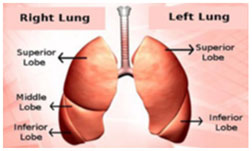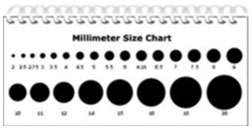What are multiple pulmonary nodules?
A pulmonary nodule is a round or oval-shaped growth in the lung. You might also hear it called a “spot on the lung”, “coin spot” or “coin lesion”. “Multiple” pulmonary nodules is when 2 or more nodules are identified. A pulmonary nodule is usually 3 centimeters or smaller in diameter. If the pulmonary nodule is greater than 3 centimeters, then it is referred to as a lung mass.
What causes multiple pulmonary nodules?
Most pulmonary nodules are caused by noncancerous tumors, infection, inflammation, an old scar, clumps of abnormal blood vessels, or conditions caused by breathing in harmful substances. However, they can be caused by metastasis (the spread of cancer that started in another part of the body) or other types of cancer. You might hear the term granuloma. A granuloma is a growth that is caused by inflammation. The inflammation can either be a result of a previous infection or a disease that is non-infectious (rheumatoid arthritis, sarcodosis, etc). If cancer is suspected, you will be notified and further follow up will be needed.
Does this mean I have cancer?
Not always, as stated above there are other things that can cause pulmonary nodules besides cancer. However, further testing may be warranted based on size of pulmonary nodules, risk factors, and/or any symptoms you may be experiencing.
What happens next?
You might need additional testing to find out why you have multiple pulmonary nodules. Either the lung screening clinic or your doctor will order these tests. They can consist of blood work, skin test that will check for tuberculosis, testing of the mucus you cough up, additional computed tomography (CT) scans, magnetic resonance imaging (MRI), a positron emission tomography (PET) scan, and/or a bronchoscopy. If none of these determine the cause of the multiple pulmonary nodules, then your doctor might want to do a biopsy. A biopsy is medical test that obtains a sample of tissue from the nodule(s) and exams it under a microscope. Your doctor will talk to you, based on the results, if you need to be watched or if some type of treatment is warranted. This is based on National Comprehensive Cancer Network guidelines (NCCN). (LINK)
Where are my pulmonary nodules located and how big is a millimeter?


Who do I contact with any additional questions?
You can contact your family doctor who referred you for the screening.

